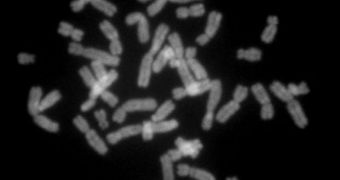Scientists at the Stanford University, in the United States, recently developed a new method for determining an individual's haplotype. The term explains chromosome groupings in individuals, showing whether a certain trait came from one parent, the other, or both.
The achievement is very important, as it could allow for the development of faster genetic diagnostics tools. It could also be used to study the genetic evolution of humans faster and in more detail.
Additionally, the team behind the work says, the technique might provide a way for genetic sequencing to be brought into general healthcare. At this point, only a few hundred people have had their genetic material sequenced.
Even with all the modern sequencing techniques, there are still some critical data that escape these analysis processes. What the Stanford team did was develop a way of breaking apart each chromosome pair, which means that they can sequence the two DNA strands separately.
This allows them to gain a wealth of new data from the same sequencing process. Using this ability could result in more efficient fetal DNA sequencing. This has applications for both diseases screenings and tracking human evolution.
The research effort was led by bioengineering expert Stephen Quake. At the same time, Jay Shendure and colleagues at the University of Washington in Seattle sequenced individual strands of DNA as well.
Both research groups published their results in this week's issue of the esteemed scientific journal Nature Biotechnology, Technology Review reports.
“It was a real technical flaw in the genomes [sequences] that have been published to date. “Every genome we are going to do from now on going will be recorded with the haplotype,” Quake explains.
His team relied on microfluidics technology for the investigation. The group developed the technology itself, so that the labs-on-a-chip become capable of separating and analyzing single molecules.
“Single cell sequencing and the ability to separate chromosomes in a dish is complicated. Unless someone builds an affordable assay, it won't be used routinely,” says of Quake's work Scripps Research Institute (SRI) geneticist Nicholas Schork.
“You can capture diversity to higher resolution if you have individual chromosomes. You lose a lot of information if you look at things at a genotype level versus a haplotype level,” adds the expert, who was not a part of the investigation.

 14 DAY TRIAL //
14 DAY TRIAL //